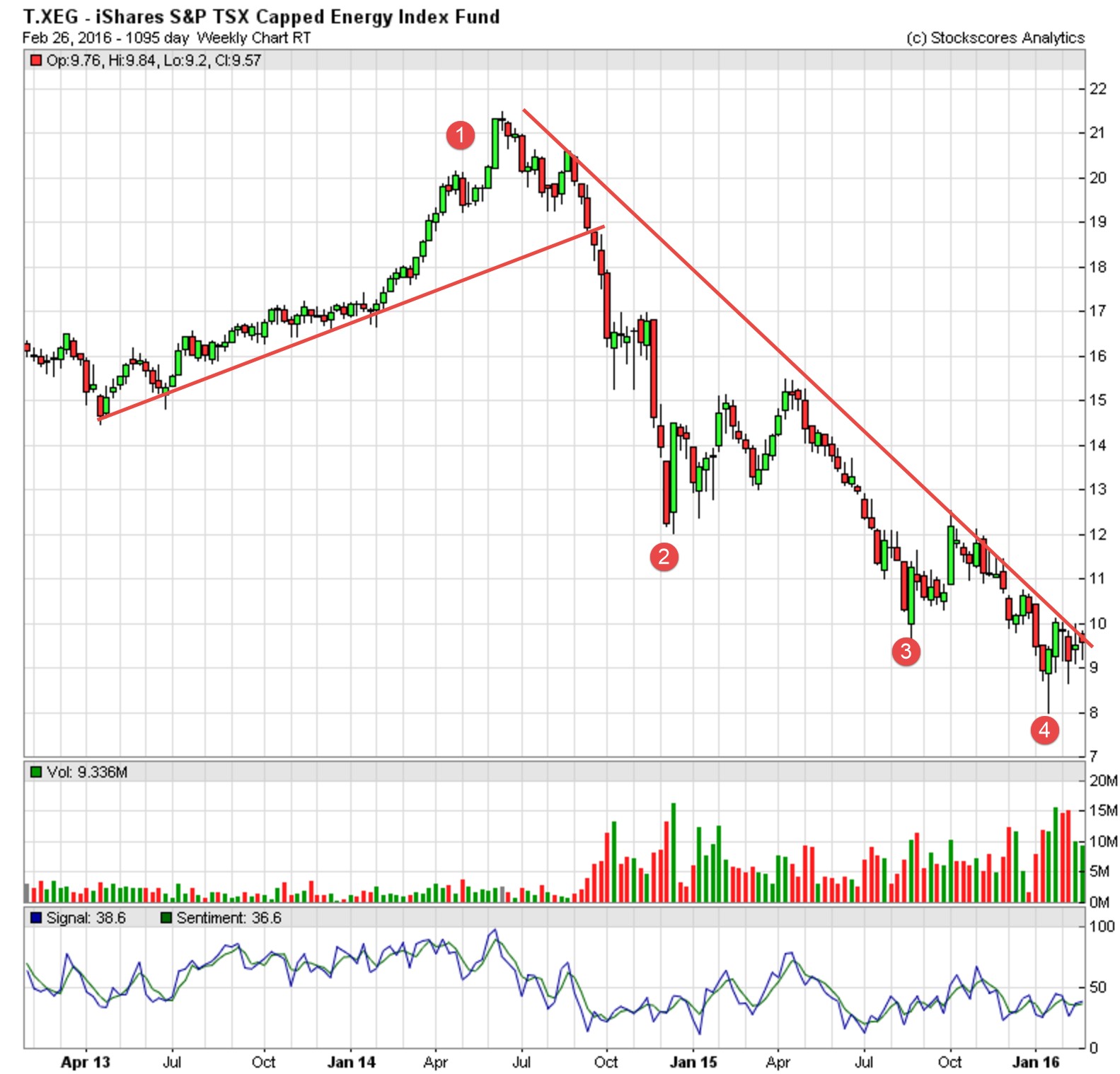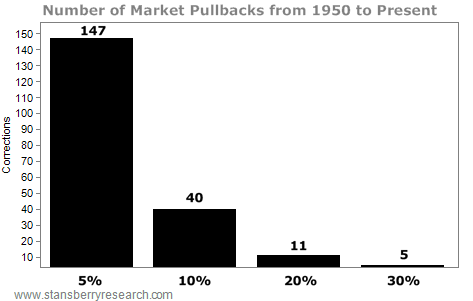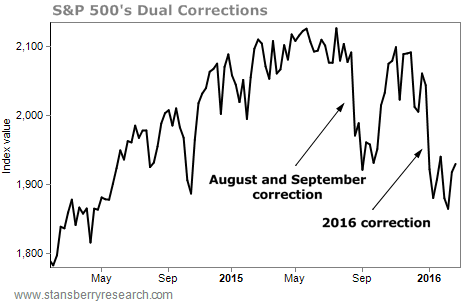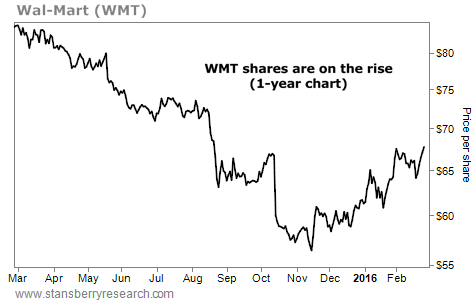Wealth Building Strategies
Being a contrarian investor makes sense to many market participants.
Buying stocks when they are weak and selling them when they are strong takes a good deal of intestinal fortitude but can pay good returns if done properly. What separates many from success is not having a good understanding of what it takes to be a profitable contrarian. Here are my thoughts.
Simply buying an asset because it has dropped in price is a losing game. There are usually very good reasons for why a stock falls in price and not understanding the cause and its effect on price can leave the bargain hunter penniless. I expect that self proclaimed contrarians have lost their shirt buying bargains in the Energy sector over the past two years. Buying a stock that is at 50% of its high price is not a bargain if it is destined to trade at 10% – or even zero.
In that is the first lesson of contrarian investing. You can not justify a purchase by saying that the company used to trade at a higher price and therefore must go back up there again. The high price may have been irrational or the current business may not be strong enough to justify that higher price again in the future. Ignore anyone who says “You should buy XYZ Energy, it used to trade at $100 and now it is only $50!”.
Many investors have an emotional attachment to the companies they buy. Perhaps they made money on them in the past, maybe they have spent countless hours studying the company’s business, for some it is the company they work for and rely on. So often, these investors’ judgment of the future is based on an emotionally clouded vision of the past.
This leads to my next rule for contrarian investing. Never use old information to make investment decisions. This is actually a great rule for all investing – information that is out in the public realm has already been priced in to the market and therefore has no value to your decision making process. The only information that has value are facts that are not widely known and therefore not yet priced in to the market. If you are going to use information, you must have an edge that the general investing public does not have.
Since most investors don’t have access to better information than the public, the opportunity that comes with being a contrarian has to be based on something other than information. This leads me to the factor which provides the greatest opportunity in the market – emotion.
We have all heard how the market moves on fear and greed but I think few people know how to take advantage of it. First, we must define in market terms what fear and greed are.
Fear is what causes people to accept an irrationally low price for a stock. It is mostly the fear that the stock is going to go lower than it already has, bringing the panicked share owner to their knees and dumping in desperation.
Greed is what causes investors to chase a stock higher, up to prices that have no basis in the fundamental value of the company. In many ways, greed is just another form of fear – the fear of missing out. As stocks move higher, investors think about what could have been if only they had bought in the past and what could be if the stock continues on its upward trajectory. Greed causes bubbles.
Fear and greed are easy to spot if you are looking at a chart of the price history of a stock or market (or anything that can have its price history charted). They are both characterized by parabolic trends. Draw a straight line across the bottoms of a price chart in an upward trend and a straight line across the tops for a price chart in a downward trend. The parabolic trends occur when price runs away from the trend line, either far above the upward trend line or far below the downward trend line.
This leads to the first opportunity for the contrarian investor. Buy stocks that have fallen down and away from their downward trend line because it is likely that they will come back up to the trend line as panic selling wears off. Sell stocks that run up and away from the upward trend line because it is likely that price will come back down to the upward trend line when emotional buying wears off.
Here is a 3 year weekly chart of the Canadian Energy Sector ETF which shows four time when emotion took prices away from the linear trend line:

At Point #1, price went parabolic to the upside providing for a good time to sell when most investors were overly optimistic about Energy stocks. Points #2, #3 and #4 came when the price trend went parabolic to the downside before a quick snap back up to the downward trend line.
Trading these emotional extremes can give the contrarian good trading opportunities. You will see these on long term charts like the one I show above but also on very short term charts that more active traders can take advantage over as little as hours or a few days.
While emotion can give you quick profits as the market works its way back to rationality, the greatest opportunity comes when the trend changes. It is usually the most well informed investors who recognize the shift in fundamentals first and they leave a trail for us to follow.
As I have written many times before, there is a simple pattern for most trend line breaks. For down trend reversals, you must have a break of a downward trend from rising bottom. For up trend reversals, you need to see a break of the upward trend from a falling top.
Go back to the chart of Canadian Energy above and you will see the formation of the falling top at the start of September 2014 and a break of the upward trend line later that month. The sentiment in the Canadian market for Energy stocks was still positive but the chart was telling us that there were problems coming. A good contrarian timed the market with a sell on the group then.
“When will it be time to buy Canadian Energy again?” is one of the most common questions I get these days. You now have the simple tools to be a contrarian buyer of these stocks just by looking at the chart of T.XEG or which ever Energy stock you are interested in. Right now, price is below the trend line so it is not time to buy. That could change as soon as next week, or it might take much longer. All you have to do to answer the question yourself is watch for a break of the red line in the chart above and make sure the break comes after the formation of a rising bottom.
There are two ways to be a successful contrarian. First, take advantage of emotion by taking trades that go against the trend when price runs away from the trend line. That means buying when price falls rapidly away from a downward trend line and then starts to move up. On the sell side, take the trade when price runs in a parabolic curve up and away from the trend line.
The second way to be a contrarian is to take trades when trends reverse with the simple break of trend from a rising bottom (buy) or falling top (sell).
Neither of these methods work every time so you must always practice good risk management. If the market gives you a signal that turns out to be wrong, take the small loss and wait for the next signal. Trading as a contrarian is like every other kind of trading – it just a numbers game where you aim to make more when you are right than what you lose when you are wrong.

We get it… you’re worried.
The bad news is easy to repeat: The market celebrated the New Year by stumbling down 9% right out of the gate… the worst start to a year ever. And it’s still down 5% year-to-date…
It’s naturally concerning to get up every morning to see more red (negative) numbers on Yahoo Finance.
But if you only take away one message from today’s essay, we want you to understand… Nothing unusual is happening in the market.
Declines of this magnitude don’t signal the end of prosperity. They are normal market movements. If you hold high-quality, long-term investments in your retirement accounts… don’t worry. Building wealth comes from holding for the long term – including through market dips.
But what about options trading? What does the recent market volatility mean for the kind of short-term trades we open in my newsletter, Retirement Trader?
The good news: Right now is an ideal time to trade options the way we do… With this correction, we have a greater opportunity to profit.
Below, I’ll show you exactly what I’m talking about. We’ll take a close look at how the market really works. You’ll see that even though the news makes it sound like the world is ending, the market is behaving normally…
By our count, from 1950 to 2015, the market experienced 47 pullbacks of 5% or more, 40 “corrections” of 10% or more, and 11 “bear markets” of a 20% drawdown. (In the unofficial vocabulary of Wall Street, a “correction” is a 10% fall and a “bear market” is a 20% fall.)
The following chart tells the story:

This tells us a few things. First, the correction that we’re experiencing right now is normal. It happens about every 1.6 years (though not on a set schedule, of course).
Second, it’s extraordinarily difficult to “trade around” these normal market movements.
If the market fell 5% and you sold shares in a panic… you would have been wrong 73% of the time. In 107 out of 147 pullbacks, a 5% fall represents the bottom, and then the market rebounds… So you would have sold low, and the market would have recovered without you.
Say you’re a little more stouthearted and you wait until the market falls to 10% to sell. This would mean that you’re trying to avoid a bear market drop of 20% or more. Even then, you’d be wrong 72.5% of the time – only 11 out of 40 pullbacks of 10% or more turn into bear markets. And again, the market will rise without you.
Selling in a panic rarely pays off. Don’t do it.
As I’ve told you before, we don’t do fear. We do rationality and preparation. We don’t trade based on emotion.
That’s why we’ve added defensive plays to our Retirement Trader portfolio to prepare.
And as always, we only trade on stocks that we’d like to own.
Corrections like these are a part of the business. In fact, we dealt with one in August. Take a look…

As you can see, the market bounced back quickly.
That’s the norm. But we don’t know for sure if that’s what will happen in this correction. The market may decline some more. It may stay level for a while.
The important thing is, we know how to take advantage of what’s happening.
Remember… options prices are determined by volatility.
When volatility is high, options get more expensive. It’s built into the way options are priced. In a simple sense, you can think of those who BUY puts as people buying insurance contracts. Those people are willing to pay a lot more for insurance when they are scared.
For those who SELL puts, this is good. We’re like insurance sellers. We can earn more income on the exact same trades simply because people are willing to pay more out of fear.
The recent correction has boosted volatility and options prices, which means the trades we open during market corrections should generate higher returns than we would make by simply buying stocks.
We don’t expect you to enjoy corrections like this. They are stressful. It feels like the market is doomed to continue falling.
But that’s simply not true. Remember this, and you can profit.
Here’s to our health, wealth, and a great retirement,
Dr. David Eifrig
|

A STRONG START TO 2016 FOR THIS WORLD DOMINATOR


AH PERFECTION: Strange, but the most popular, the most widely-requested, and the most widely quoted piece I’ve ever written was not about the stock market — it was about business, and specifically about what I call the theoretical “ideal business.” I first published this piece in the early-1970s. I repeated it in Letter 881 and then again in Letter 982. I’ve added a few thoughts in each successive edition. But seldom does a month go by when I don’t get requests from subscribers or from some publication or corporation to republish “the ideal business.” So here it is again — with a few added comments.
I once asked a friend, a prominent New York corporate lawyer, “Dave, in all your years of experience, what was the single best business you’ve ever come across?” Without hesitation, Dave answered, “I have a client whose sole business is manufacturing a chemical that is critical in making synthetic rubber. This chemical is used in very small quantities in rubber manufacturing, but it is absolutely essential and can be used in only super-refined form.
“My client is the only one who manufactures this chemical. He therefore owns a virtual monopoly since this chemical is extremely difficult to manufacture and not enough of it is used to warrant another company competing with him. Furthermore, since the rubber companies need only small quantities of this chemical, they don’t particularly care what they pay for it — as long as it meets their very demanding specifications. My client is a millionaire many times over, and his business is the best I’ve ever come across.” I was fascinated by the lawyer’s story, and I never forgot it.
When I was a young man and just out of college my father gave me a few words of advice. Dad had loads of experience; he had been in the paper manufacturing business; he had been assistant to Mr. Sam Bloomingdale (of Bloomingdale’s Department store); he had been in construction (he was a civil engineer); and he was also an expert in real estate management.
Here’s what my dad told me: “Richard, stay out of the retail business. The hours are too long, and you’re dealing with every darn variable under the sun. Stay out of real estate; when hard times arrive real estate comes to a dead stop and then it collapses. Furthermore, real estate is illiquid. When the collapse comes, you can’t unload. Get into manufacturing; make something people can use. And make something that you can sell to the world. But Richard, my boy, if you’re really serious about making money, get into the money business. It’s clean, you can use your brains, you can get rid of your inventory and your mistakes in 30 seconds, and your product, money, never goes out of fashion.”
So much for my father’s wisdom (which was obviously tainted by the Great Depression). But Dad was a very wise man. For my own part, I’ve been in a number of businesses — from textile designing to advertising to book publishing to owning a night club to the investment advisory business.
It’s said that every business needs (1) a dreamer, (2) a businessman, and (3) a S.O.B. Well, I don’t know about number 3, but most successful businesses do have a number 3 or all too often they seem to have a combined number 2 and number 3.
Bill Gates is known as “America’s richest man.” Bully for Billy. But do you know what Gates’ biggest coup was? When Gates was dealing with IBM, Big Blue needed an operating system for their computer. Gates didn’t have one, but he knew where to find one. A little outfit in Seattle had one. Gates bought the system for a mere $50,000 and presented it to IBM. That was the beginning of Microsoft’s rise to power. Lesson: It’s not enough to have the product, you have to know and understand your market. Gates didn’t have the product, but he knew the market — and he knew where to acquire the product.
Apple had by far the best product in the Mac. But Apple made a monumental mistake. They refused to license ALL PC manufacturers to use the Mac operating system. If they had, Apple today could beMicrosoft, and Gates would still be trying to come out with something useful (the fact is Microsoft has been a follower and a great marketer, not an innovator). “Find a need and fill it,” runs the old adage. Maybe today they should change that to, “Dream up a need and fill it.” That’s what has happened in the world of computers. And it will happen again and again.
All right, let’s return to that wonderful world of perfection. I spent a lot of time and thought in working up the criteria for what I’ve termed the IDEAL BUSINESS. Now obviously, the ideal business doesn’t exist and probably never will. But if you’re about to start a business or join someone else’s business or if you want to buy a business, the following list may help you. The more of these criteria that you can apply to your new business or new job, the better off you’ll be.
(1) The ideal business sells the world, rather than a single neighborhood or even a single city or state. In other words, it has an unlimited global market (and today this is more important than ever, since world markets have now opened up to an extent unparalleled in my lifetime). By the way, how many times have you seen a retail store that has been doing well for years — then another bigger and better retail store moves nearby, and it’s kaput for the first store.
(2) The ideal business offers a product which enjoys an “inelastic” demand. Inelastic refers to a product that people need or desire — almost regardless of price.
(3) The ideal business sells a product which cannot be easily substituted or copied. This means that the product is an original or at least it’s something that can be copyrighted or patented.
(4) The ideal business has minimal labor requirements (the fewer personnel, the better). Today’s example of this is the much-talked about “virtual corporation.” The virtual corporation may consist of an office with three executives, where literally all manufacturing and services are farmed out to other companies.
(5) The ideal business enjoys low overhead. It does not need an expensive location; it does not need large amounts of electricity, advertising, legal advice, high-priced employees, large inventory, etc.
(6) The ideal business does not require big cash outlays or major investments in equipment. In other words, it does not tie up your capital (incidentally, one of the major reasons for new-business failure is under-capitalization).
(7) The ideal business enjoys cash billings. In other words, it does not tie up your capital with lengthy or complex credit terms.
(8) The ideal business is relatively free of all kinds of government and industry regulations and strictures (and if you’re now in your own business, you most definitely know what I mean with this one).
(9) The ideal business is portable or easily moveable. This means that you can take your business (and yourself) anywhere you want — Nevada, Florida, Texas, Washington, S. Dakota (none have state income taxes) or hey, maybe even Monte Carlo or Switzerland or the south of France.
(10) Here’s a crucial one that’s often overlooked; the ideal business satisfies your intellectual (and often emotional) needs. There’s nothing like being fascinated with what you’re doing. When that happens, you’re not working, you’re having fun.
(11) The ideal business leaves you with free time. In other words, it doesn’t require your labor and attention 12, 16 or 18 hours a day.
(12) Super-important: the ideal business is one in which your income is not limited by your personal output (lawyers and doctors have this problem). No, in the ideal business you can sell 10,000 customers as easily as you sell one (publishing is an example).
That’s it. If you use this list it may help you cut through a lot of nonsense and hypocrisy and wishes and dreams regarding what you are looking for in life and in your work. None of us own or work at the ideal business. But it’s helpful knowing what we’re looking for and dealing with. As a buddy of mine once put it, “I can’t lay an egg and I can’t cook, but I know what a great omelet looks like and tastes like.”


“With the bigger presence of media talking about the markets and the hyperactivity of trading by computers, do you see this higher volatility as a more permanent reality for the markets?”
I like this question because the amount of media attention and computer trading is unquestionably higher today than the past. It worries a lot of people.
But the premise of the question — whether there is more volatility today compared to the past — is a separate issue. And the answer might surprise you.
In response to the question I said that I suspected, without looking at the data, that …
- Hour-to-hour, day-to-day, market volatility is indeed higher now than it was in the past.
- Month-to-month, year-to-year, I didn’t think volatility is higher now than it’s been for most of history.
But that was a guess. So I crunched the numbers this week and … CLICK HERE to read the complete article


The Evidence-Based Investor Video series is a service provided by Paul Philip and the team at Financial Wealth Builders Securities












